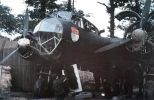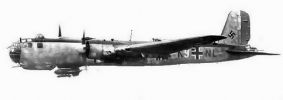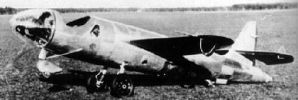
Dornier 17608 viewsThe Dornier 17, were the mainstay of the German bombers during the Blitz on Britain and especially London. Dornier 17 had been an easy target for the Spitfires and Hurricanes of Fighter Command but had proved itself to be a valuable part of the Luftwaffe in campaigns that led up to this battle. The Luftwaffe valued the plane as was shown by production levels for the plane at the start of the war. 1,700 Dornier 17's were built between 1939 and 1940. It made its mark in the attack on Poland in September 1939 and its versatility was such that it was used as a bomber, reconnaissance plane and as a pathfinder by the Luftwaffe. Its limitations were shown in the Battle of Britain, however, when it became clear that the plane was very vulnerable to attacks from the rear and from below and that its defensive armaments were poor. As with other German bombers, against a poor air force, the Dornier 17 did well and the Luftwaffe clearly was over-confident as to its capabilities.
|
|

Heinkel He 177520 viewsThe He 177 was a try to devellop a real strategic bomber. The idea to combine two motors on one propeller lead to heavy problems. Due to this and other misstakes in construction, the plane became a deadly trap for many crews and got the the nick-name "Lighter of the Reich". The He 177 saw first operational service in 1942 and was mainly used for maritime warfare in the west. In the mid of 1944 87 He 177 flew an attack on Velikye Luki at the east-front. At the end of the war one machine was modified to carry a german atomic bomb.
|
|

Heinkel He 176701 viewswas the world’s first aircraft to be propelled solely by a liquid-fuelled rocket, making its first powered flight on July 20 1939 with Erich Warsitz at the controls. The He 176 was built to utilise one of the new Walter engines. It was a tiny, simple aircraft, built almost entirely out of wood and lacking even an enclosed canopy. It had a conventional, fixed, tricycle undercarriage, but relied on the weight of the pilot to actually rest on its wheels. Empty, the tail of the plane rested on the ground. Heinkel demonstrated the aircraft to the RLM, but official disinterest led to the abandonment of the company's rocket propulsion programme. The He 176 was placed in the Deutsches Technikmuseum ("German Technical Museum") in Berlin, where it was destroyed in an air raid during World War II.
|
|
|
|